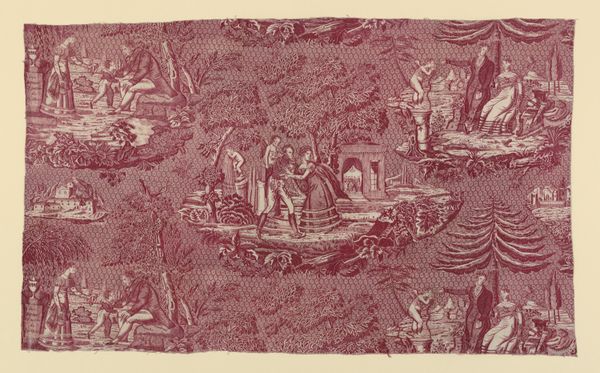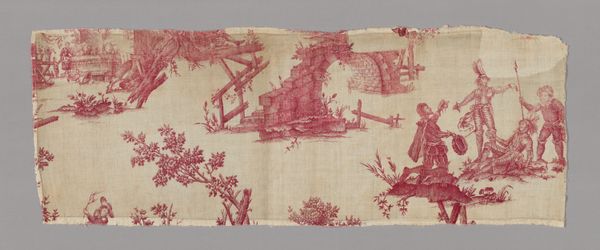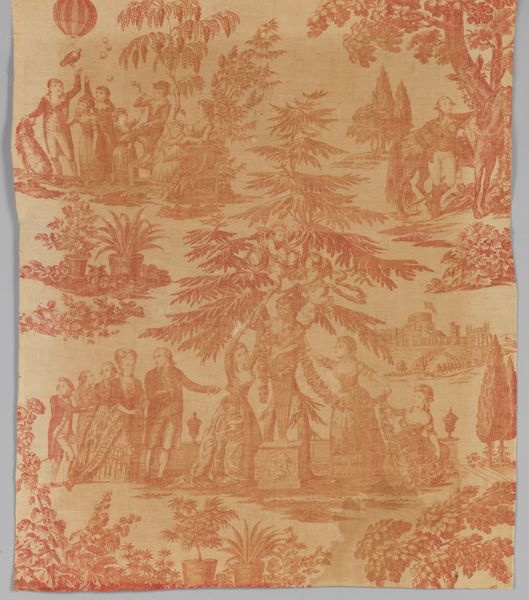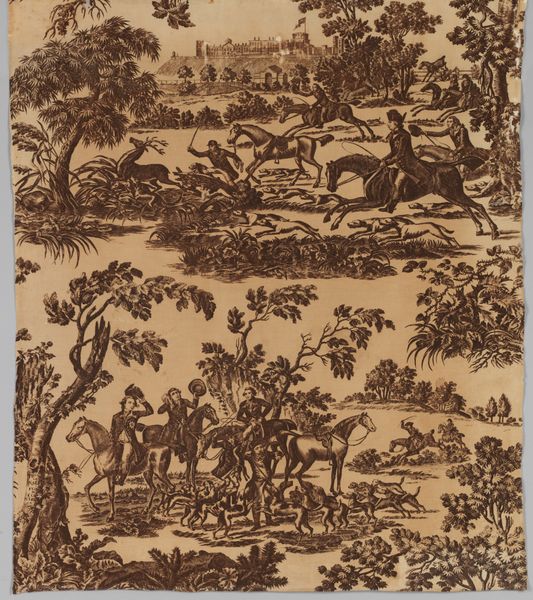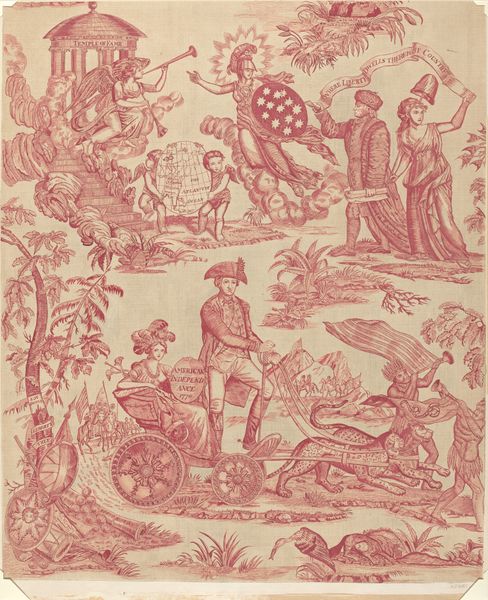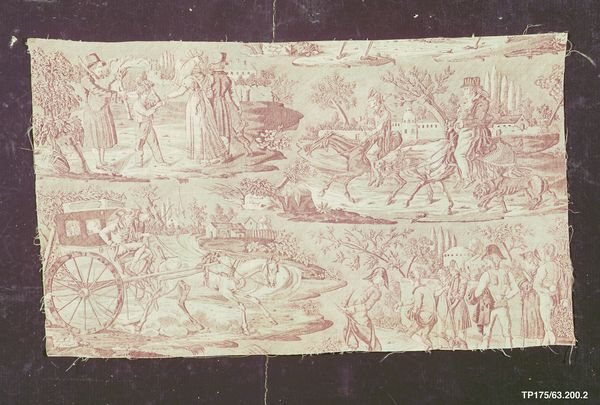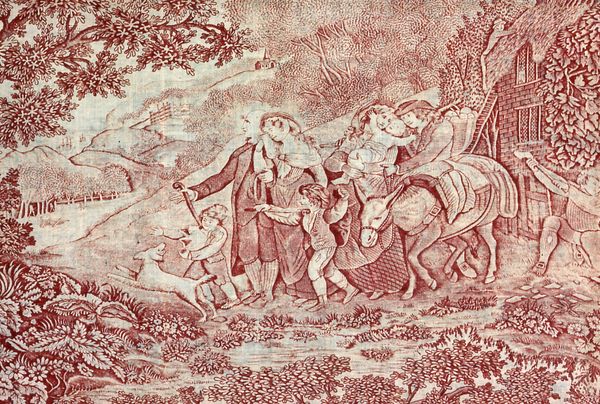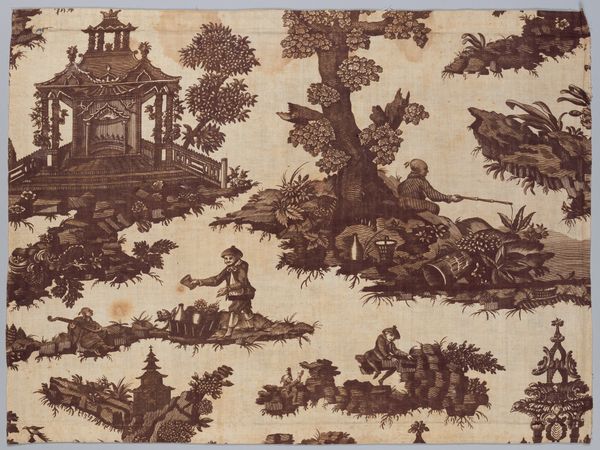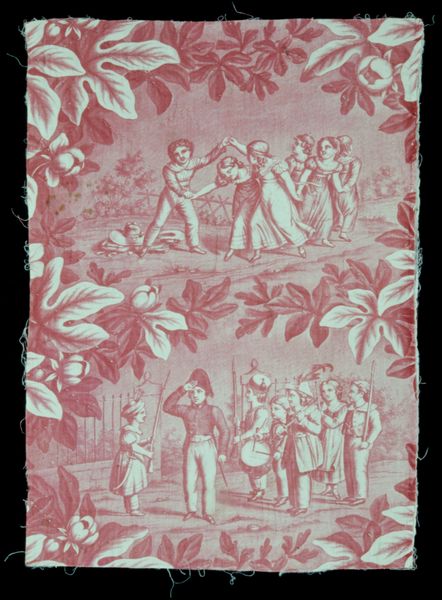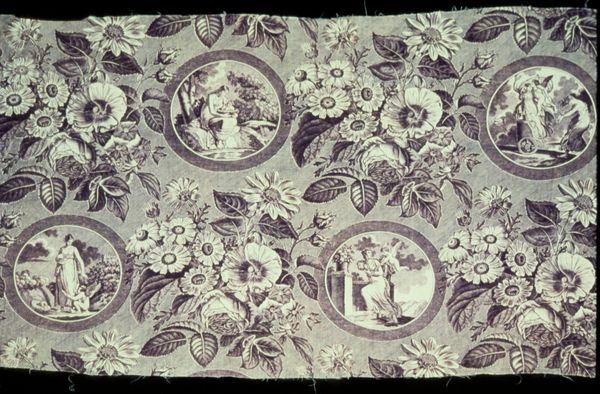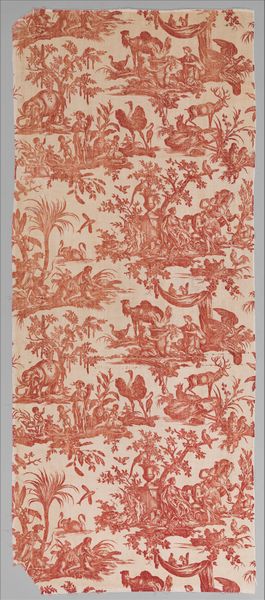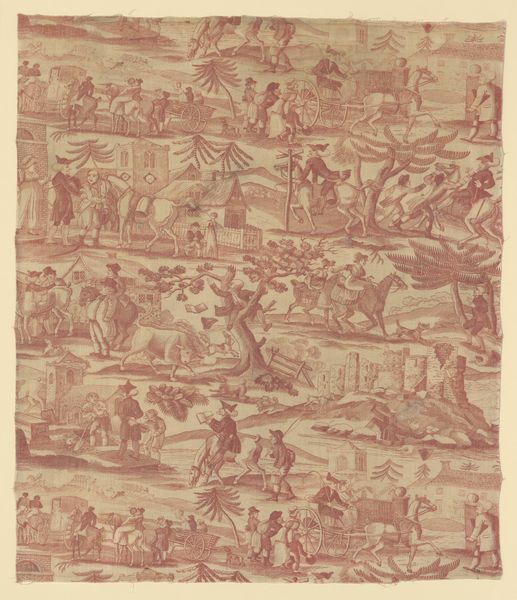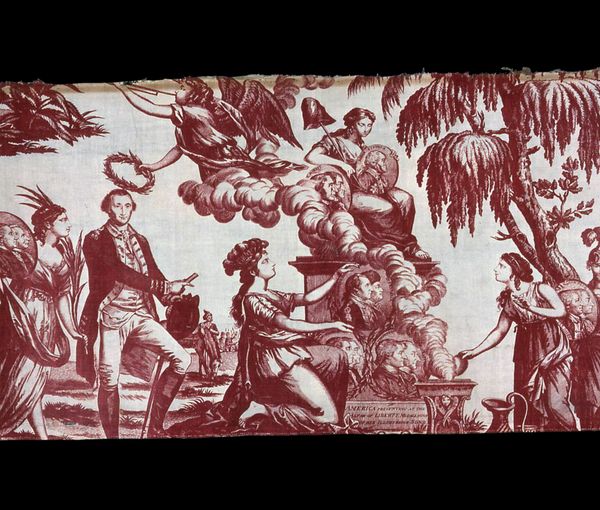
Dimensions: 37 3/4 x 17 1/4 in. (95.89 x 43.82 cm) (irregular)
Copyright: Public Domain
Curator: Let’s discuss this textile panel, dating back to around 1788, created by Pierre Dubern et Cie in France. It is rendered as a red monochrome print on a cotton panel, specifically a woodcut print. What strikes you first? Editor: Immediately, I see a theatricality to it. It is a world of classical allusion, like a stage set from some half-remembered myth, but there is a disquieting lack of depth as if it were intentionally flattened, like stagecraft, with repeated figures in red that feel allegorical. Curator: It is a captivating observation. The technique employed—the woodcut print on cotton—would have been part of a broader material culture, used in interiors, perhaps even clothing, to indicate wealth and refined taste. These printed textiles allowed for wider access to relatively complex pictorial scenes in homes of people for whom painted artworks were inaccessible. Editor: Absolutely, and note the figures themselves. You have Cupid figures scattered through the panel and classical figures engaged in symbolic acts. Take the man in the boat. He cuts an imposing figure, echoing Charon perhaps. What stories were people telling themselves with such domestic decoration? What anxieties or aspirations are reflected in this red world? Curator: Indeed, that deeper resonance can’t be dismissed. The printing process itself becomes part of the symbolic narrative. The labor involved in cutting the woodblock, the skill in applying the dye, speaks to a world of craft and production. The monochrome simplifies, yet in so doing it allows the narratives to stand out and become memorable visual statements. Editor: It's a fantastic juxtaposition between high classical themes and the repetitive process of manufacturing—mythical musings accessible due to production advances. The continuous scenes lend it an odd timelessness, even though this is just a section. How many drawing rooms once featured this very panel, prompting reflection or providing the backdrop for countless conversations? Curator: That connection to lived experience is precisely what is compelling about this panel. It underscores the fusion of aesthetic vision and industrial capability shaping everyday experience in the late 18th century. Editor: So, in the end, a fragment reminds us of larger narratives, both personal and historical, a red dream preserved on cloth.
Comments
No comments
Be the first to comment and join the conversation on the ultimate creative platform.
